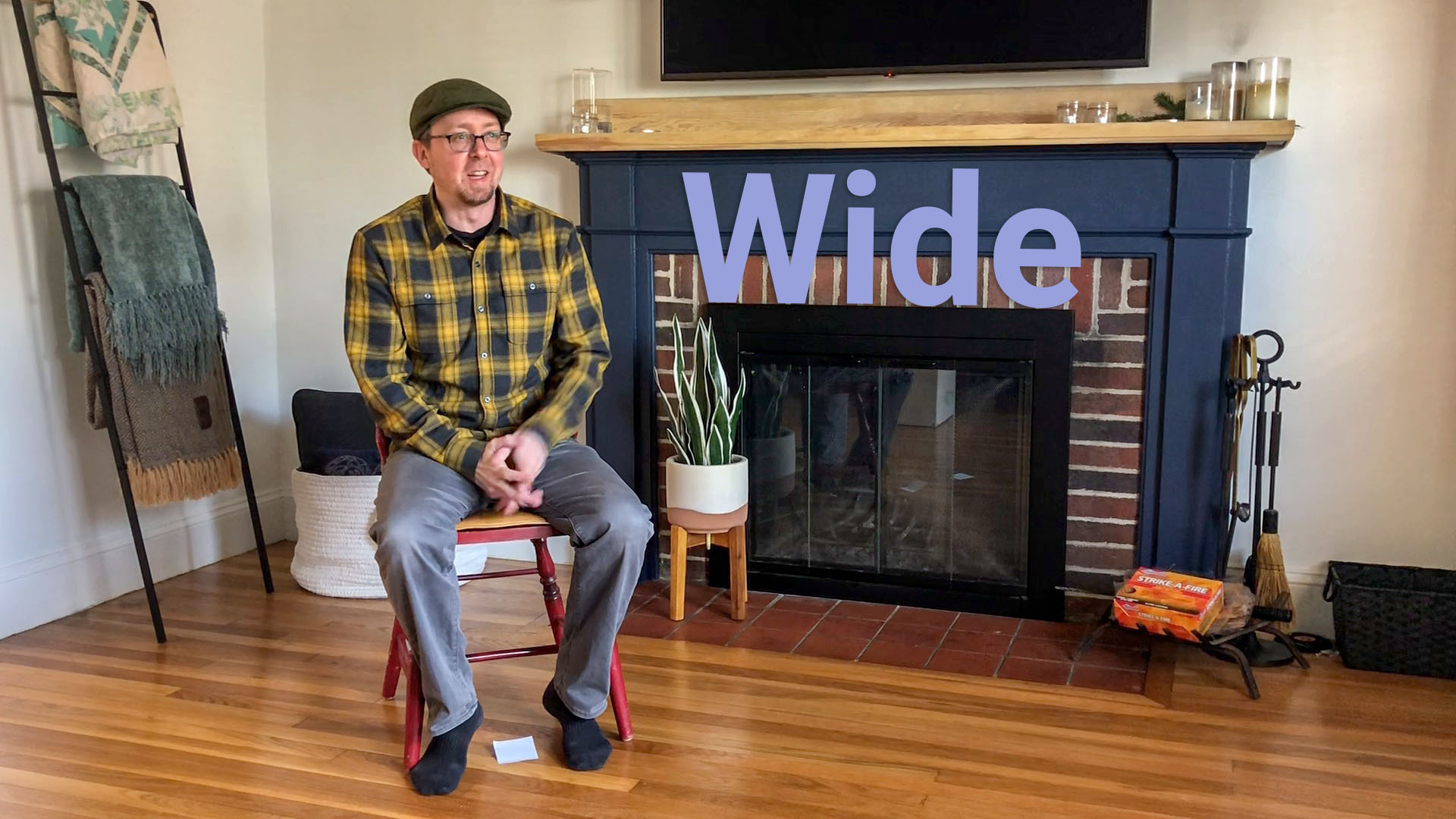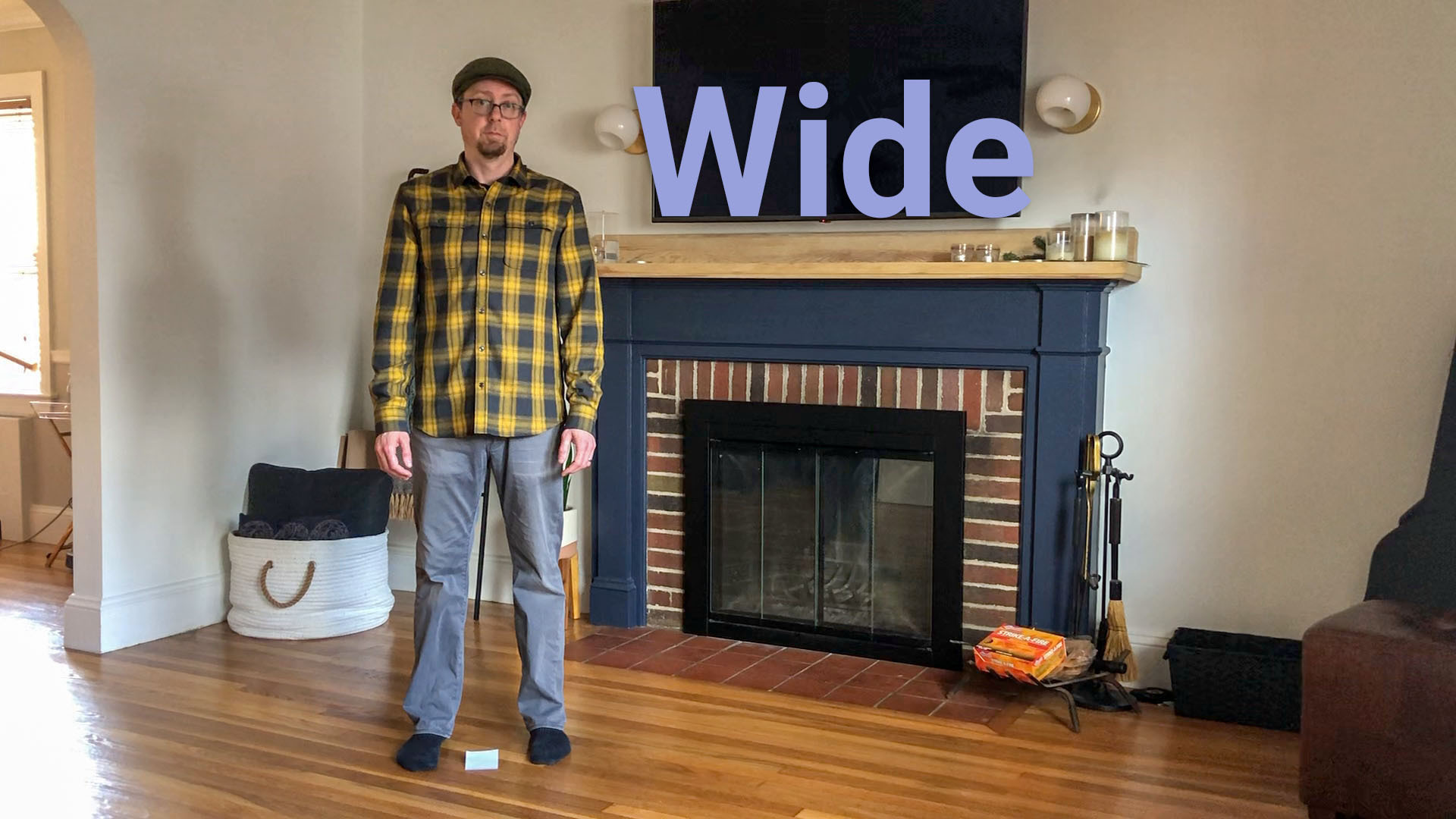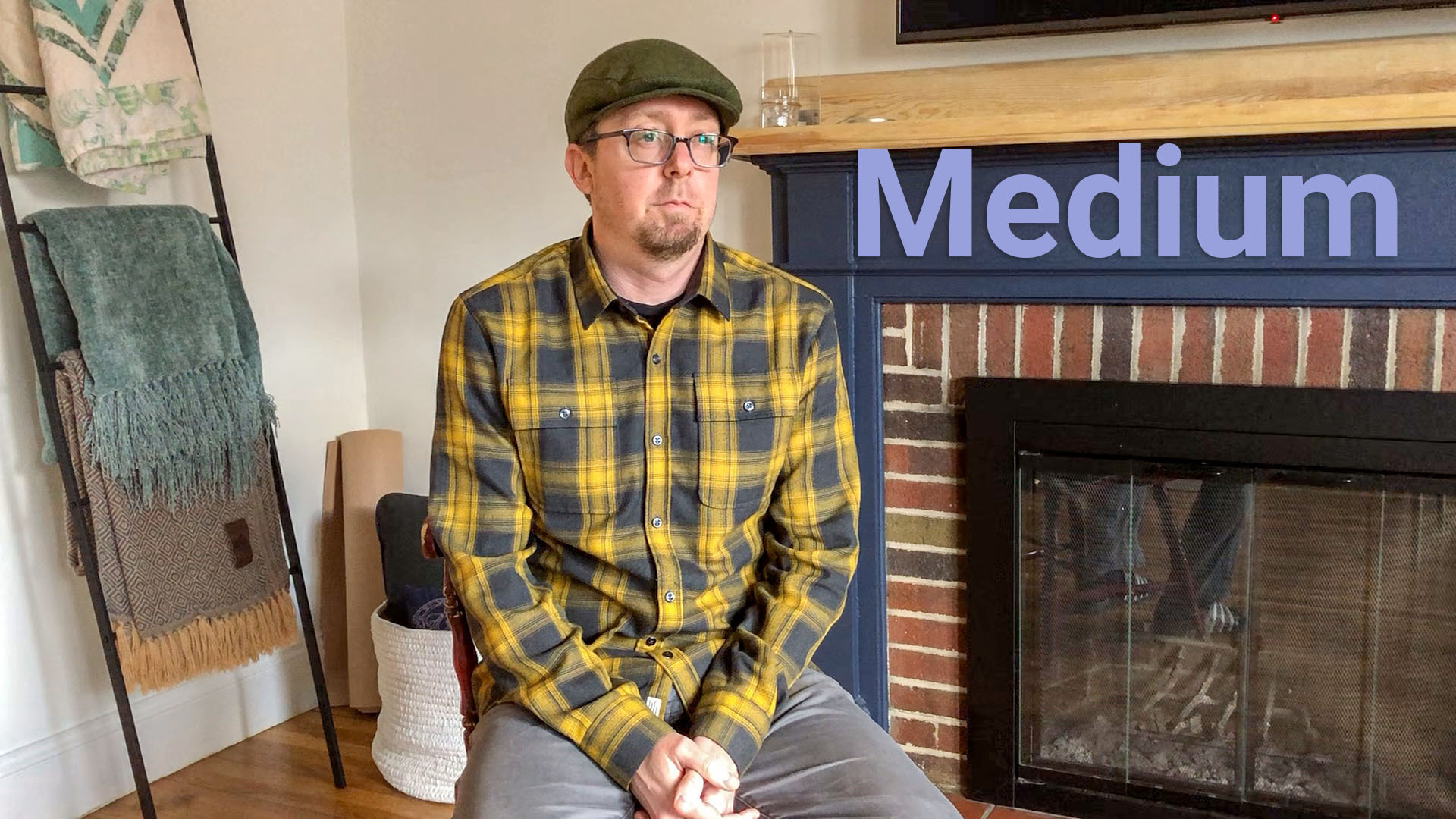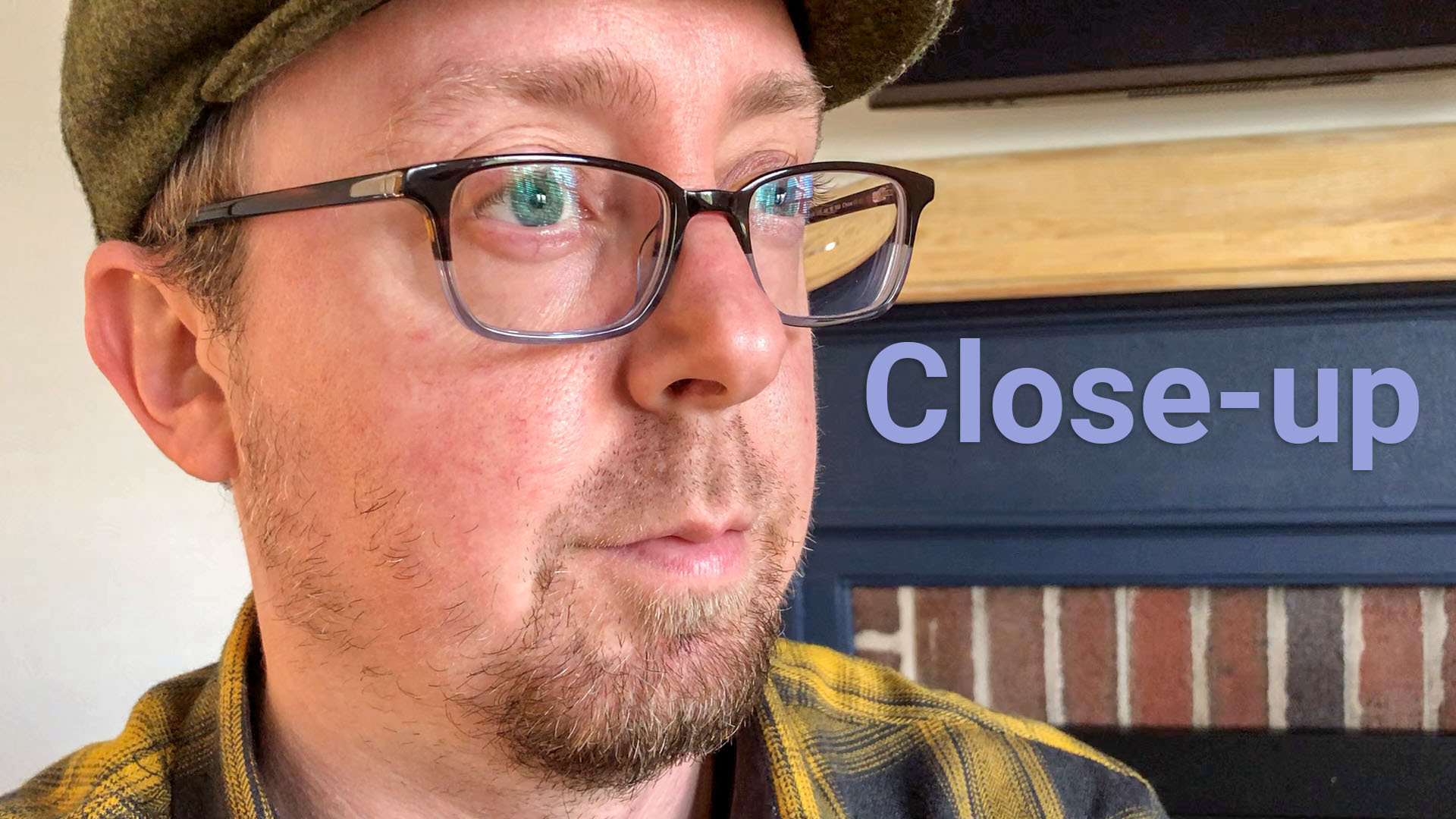Framing and Composition Considerations for Smartphone Videography
There are an infinite number of ways to film a scene! Yet Knowing how to guide your audience through that scene while conveying the right emotion and tone, starts with knowing which types of shots to use, and when. Here's a breakdown of some of the main shots you have at your disposal:
Behold! The classic Wide shot! To quote from Masterclass.com, "A wide shot, also called a long shot or a full shot, is a shot that shows the subject within their surrounding environment. A wide shot tells the audience who is in the scene, where the scene is set, and when the scene takes place. Wide shots allow actors to utilize their physicality and give the director a lot of space in which to work."
 Shot on iPhone X, 8.5 ft. from camera to subject, with no zoom
Shot on iPhone X, 8.5 ft. from camera to subject, with no zoom
This is the standing Wide (or Long) shot. This type of shot is also utilized for establishing the scene, but with a greater emphasis on seeing the subject in their entirety from head to toe.
 Shot on iPhone X, 12 ft. from camera to subject, with no zoom
Shot on iPhone X, 12 ft. from camera to subject, with no zoom
Here is the Wide shot again, but with Mike sitting down rather than standing. This shot is composed to emulate a situation where an iPhone filmmaker is shooting a scene where s/he has to be captured in both a sitting and standing position, without reframing the shot. Here Mike has enough head room so as to keep him in frame when he stands up. (Note: this is the exact same framing as the wide shot directly above!)
 Shot on iPhone X, 12 ft. from camera to subject, with no zoom
Shot on iPhone X, 12 ft. from camera to subject, with no zoom
This is a comfortable Medium shot. We can see 1/2 to 2/3 of the subject in the frame, while revealing some of the surrounding environment. This shot is used to help the viewer focus on what the subject is doing or saying. (In an interview setting, this shot sometimes fulfills the role of the "wide" shot to keep the subject at a conversational distance.)
 Shot on iPhone X, 4 ft. from camera to subject, with no zoom
Shot on iPhone X, 4 ft. from camera to subject, with no zoom
Closer still! Use a Medium close-up by showing the top third of your subject, from the chest and shoulders up, while not revealing all that much from the surrounding environment. In this shot we are more focused on the face now, so we're feeling connected to the subject and we're paying closer attention to their words and actions.
 Shot on iPhone X, 2 ft, 2" from camera to subject, with no zoom
Shot on iPhone X, 2 ft, 2" from camera to subject, with no zoom
And now for the ever dramatic, Close-up shot! The subject's face is now filling the entire frame. His emotion can be seen in great detail, and emphasis is being put on what the subject is saying or reacting to.
 Shot on iPhone X, 16" from camera to subject, with no zoom
Shot on iPhone X, 16" from camera to subject, with no zoom
Hopefully this provides a decent background into the vocabulary of shots that you can use as a videographer, and why you would want to employ those shots. But to continue building on your knowledge with other considerations for smartphone video (e.g., lighting considerations, creative tips for framing, and for building your own DIY smartphone tripods), please check out the following page: